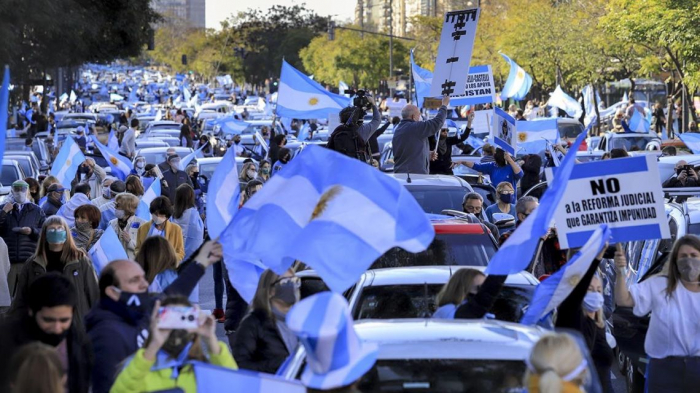On July 15, 2008, one could hear the rumblings of the pro-Kristina rally from several blocks away. It began as a deep reverberation, like a distant earthquake. Getting closer, however, the cacophony of different drum groups and the chanting mob became as clear as the pungent smell of marijuana.As I stepped into the Plaza Congreso, chaos greeted me. Once I broke through the walls of people pushing each other to circumnavigate the plaza, I saw families sitting on curbs or on the ground, sipping mate and chatting. The strident sound of beating drums came from several directions. Tethered balloons, banners, and flags covered the sky. Long, 100-foot flag-like banners made walking impossible.Near the center of the plaza, large organized groups, such as the mailmen from Correo Argentino, gathered, drinking beer, singing, dancing, and yelling. The mood was jovial, almost as if the crowd was celebrating someone’s birthday and not marking their support for the government’s tax on agricultural exports.
The sun was impossible to ignore on Libertador Avenue, the location for the protest in support of the campo. Only an hour or two from setting, it cast long shadows on one of Buenos Aires’ most beautiful streets and home to several upscale neighborhoods of the city. Masked with designer sunglasses or peering down from their balconies, the supporters of the campo did not seem to notice.The older crowd used cell phones to locate friends and visited the nearby posh ice cream shop, Volta, while waiting for the rally to begin. Golden retrievers, among other well-kempt dogs, dotted the crowd of businessmen, children, and fashionistas.Protesters here were more chic, and the event seemed more like a seen-and-be-seen barbeque than a political protest, except for the prolific Argentine flags. Protestors enthusiastically waved hundreds of them, silhouetted by the sun

Reply